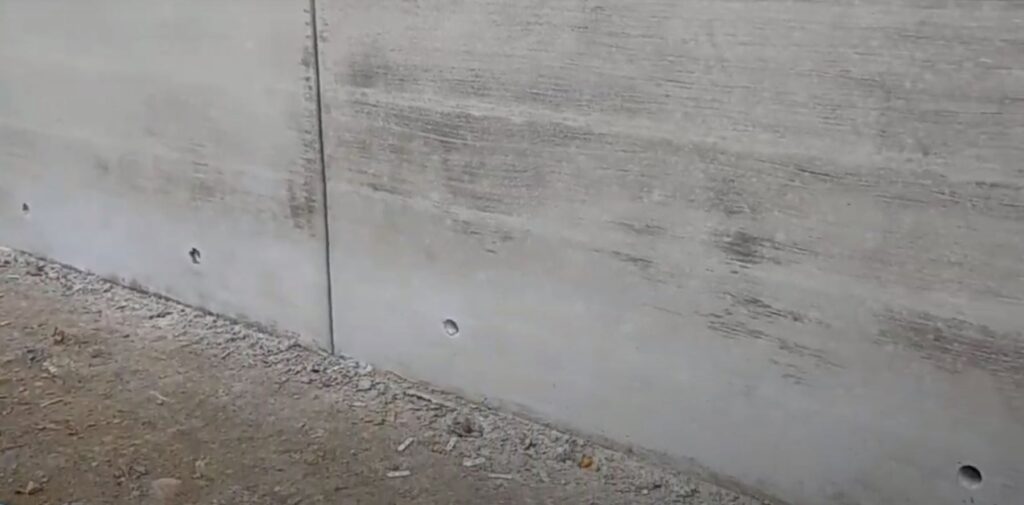Engineering Necessities for Retaining Walls
Engineering Retaining Walls: When Is It Required?
When it comes to constructing retaining walls in Hamilton, including in areas like Forest Lake and Flagstaff, the necessity for an engineered design often hinges on several key factors:
- Wall Height: If the wall exceeds 800mm in height, an engineered design becomes a requirement for council approval and ensuring the wall’s longevity.
- Weight and Load Considerations: The presence of heavy weight above the wall, such as vehicles or trailers, necessitates engineering due to the added pressure on the wall.
- Climate Factors: In areas with heavy rain, the rain load’s impact on the wall should be considered.
Site-Specific Conditions Impacting Engineering Needs
- Sloped Terrain: Engineering is crucial on sloped land, as the additional soil load may exceed a basic wall’s design capacity.
- Terraced Walls: For terraced walls, engineering is needed, especially if walls are close together or if multiple terraces are planned.
Engineering Design Elements
A professional engineer will provide a detailed design including:
- Footing dimensions.
- Suitable materials and sizes.
- Reinforcement details.
- Concrete strengths and pier layouts.
Health and Safety in Retaining Wall Construction
Construction of retaining walls, particularly in residential areas like Forest Lake and Flagstaff, must account for various health and safety concerns:
- Hazards: These include falls, hazards from nearby services (like electricity or gas), and risks from falling objects or unsecured materials.
- Site Considerations: Assessing the site’s proximity to buildings, roads, or watercourses is crucial for planning and safety.
- Design Considerations: Selecting the right wall type for its location, minimizing excavation depth, and ensuring ease of maintenance are key to a safe and functional retaining wall.
In Hamilton, whether you’re looking to enhance your property in Forest Lake or Flagstaff, understanding when your retaining wall needs to be engineered is vital. It’s not just about meeting legal requirements; it’s about ensuring the safety and durability of the structure. For such projects, consulting with expert retaining wall builders like Quality Fencing Hamilton can provide peace of mind and guarantee that your retaining wall is not only aesthetically pleasing but also structurally sound and compliant with local regulations.
Key Takeaways: Understanding the Engineering of Retaining Walls
Engineering is Crucial for Taller Walls Retaining walls over 800mm in height generally require engineering to ensure safety, stability, and compliance with local regulations.
Consideration of Weight and Climate is Essential The weight above the wall, such as vehicles, and environmental factors like snow loads, are critical in determining the need for engineering.
Terrain and Design Influence the Need for Engineering Engineering becomes necessary in sloped terrains and for complex designs like terraced walls.
Health and Safety are Paramount in Construction Safety considerations include potential hazards from the construction environment and the design’s interaction with existing structures and services.
Frequently Asked Questions on Engineering Retaining Walls
What Determines the Need for Engineering a Retaining Wall? The wall’s height, weight load above the wall, and specific site conditions like sloped terrain or terraced designs.
Why is Engineering Required for Taller Retaining Walls? Engineering ensures structural integrity and compliance with safety standards for walls above 800mm.
How Does Weight Above the Wall Affect Engineering Needs? Heavy loads like vehicles or equipment above the wall increase pressure and demand more robust engineering.
Does Climate Impact the Engineering of a Retaining Wall? Yes, in areas with heavy rain, the additional load from rain must be considered in the design.
What Site Conditions Necessitate Engineering? Engineering is crucial for walls built on sloped land or in terraced arrangements.
What Are the Key Elements in an Engineered Retaining Wall Design? These include footing details, material and section sizes, reinforcement detailing, and concrete strengths.
How Does Engineering Affect the Safety of a Retaining Wall? Proper engineering addresses potential risks, ensuring the wall’s stability and safety.
Is Engineering Mandatory for All Retaining Walls? Not all walls require engineering, but it’s essential for walls over a certain height or under specific conditions.
What Happens if a Retaining Wall is Not Properly Engineered? Improperly engineered walls may fail, leading to safety hazards and potential property damage.
Do Local Regulations Impact the Engineering of Retaining Walls? Yes, local building codes and regulations often dictate when engineering is required.
Can Existing Retaining Walls be Upgraded with Engineering? Engineering can be applied to existing walls for reinforcement or to meet updated safety standards.
Who Should Design an Engineered Retaining Wall? A licensed and experienced engineer should be consulted for designing retaining walls that require engineering.




